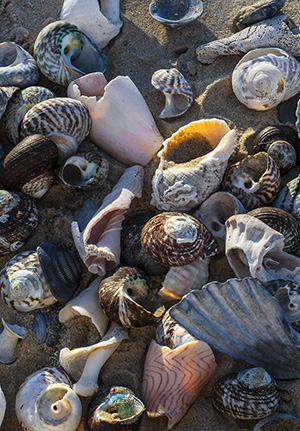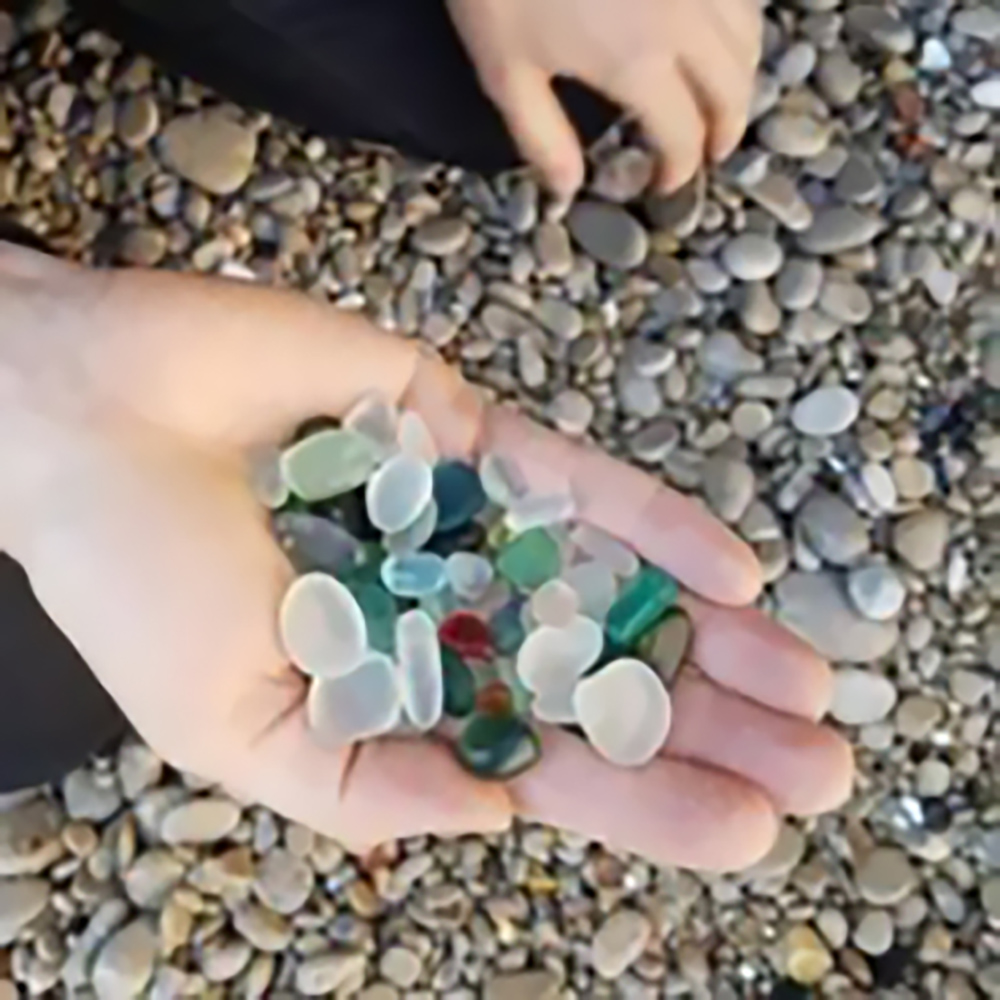By Steffen Klenk

Stepping onto the beach can be quite an adventure. One of my favorite activities any time of the year is beachcombing. You never know what treasures will be found next. From sea glass, sharks teeth, seashells to driftwood, our beaches are filled with treasures of the sea.
The word “beachcombing” first originated from an 1840 book by Richard Henry Dana Jr. titled Two Years Before the Mast. It was described as residents of the South Pacific Islands who would “comb” the beach in search of ship’s goods that had been lost at sea, shipwrecked items, which they used as goods for trade.
Today, seashells are the most beautiful, sought after treasures. They were once home to various mollusks (slimy-like creatures such as snails or clams). Their delicate bodies secrete calcium carbonate that hardens on their bodies, creating a shell which continues to grow until the mollusk dies.
Do you ever wonder why there is a single hole in a shell? While in the ocean, a moon snail attaches itself to the shell of clams, releasing an acid that causes the shell to soften. It then drills a hole using its long, sharp tongue called a radula, and eats the clam inside. Shells you can expect to find along our shores vary in size and color. Bay scallops, Atlantic ribbed mussels, oysters and razor clams are just a few of them. The most sought after shells are the Whelks, white surf clams, starfish and sand dollars, which are a real treasure if found fully intact. Other treasures include pieces of driftwood, sea glass and sharks teeth.

Finding a sharks tooth along the beaches of New Jersey can be a rare find. Throughout its lifetime, a shark will shed approximately 35,000 teeth. Those who have an interest in searching for shark’s teeth may have some luck. Locally, Big Brook Preserve in Colts Neck, Monmouth County would be your best bet to do some fossil hunting.
Before you go out on a beachcombing adventure, there are several items you’ll want to bring.
A watch as a reminder of tidal changes
Shoes with appropriate soles: Walking along our beaches is usually done barefoot, though some of the shells may feel too sharp. Climbing over rocks can also be quite slippery.
Containers such as bags, buckets or baskets
Hand sanitizer: Shells won’t have the most pleasant odor until they are washed at home.
Sunscreen
A shovel to dig for treasures; a grabber stick may be helpful
As you scan the beach, there are a few important things to remember. Make sure there are no sea creatures living inside your collection of shells. If a shells feels just slightly heavier than normal, carefully check before placing it in your bag or pocket. The ocean is their home too. Also, be alert for horseshoe crabs that have washed ashore. They may look dead with the underside up. If turned over gently, you may find it making its way back into the water. Be aware of slippery surfaces, undetected tides and fish hooks.
Sadly, on some walks I have encountered items that do not belong along our shores. Please do your part to help make our beach clean and beautiful. Carry an extra bag to collect any trash and dispose of in the appropriate receptacles or at home. In an effort to prevent trash from impacting our oceans, families, individuals and beach clean-up groups can identify their findings with the Marine Debris Tracker. Launched in 2010, the website, marinedebris.engr.uga.edu, has logged over 1.5 million pieces of ocean debris, submitted by users worldwide. Marine Debris Tracker is supported by the National Oceanic and Atmospheric Association (NOAA).
There are many shell and sea glass magazines for both adults and children that include endless ideas for family oriented activities. Shell painting, making wind chimes, even a fun beach game of shell toss are just some of the fun projects you can create. Whether you’re looking for art, inspiration, curiosity or general interest, beachcombing can be a fun activity for all.
Be gentle with our shore life and protect our local wildlife and beaches. Please do not climb on the dunes while searching for your treasures.
Steffen Klenk is a multimedia journalist. He resides in Ocean City and enjoys capturing the eclectic moments of shore life.





